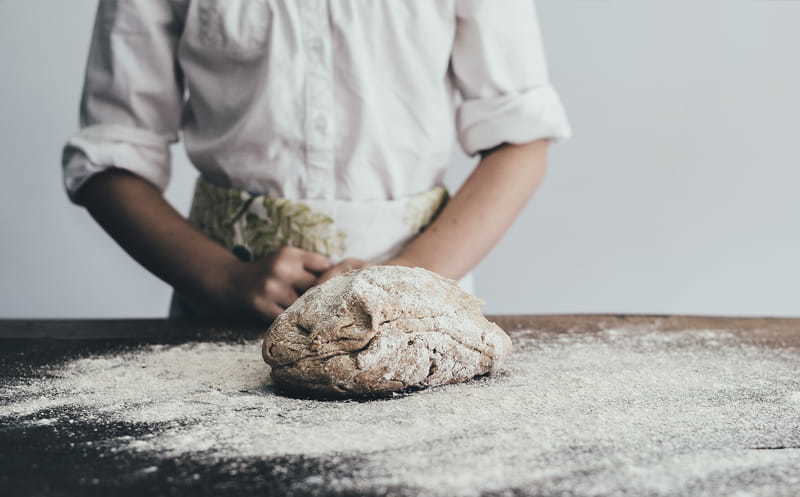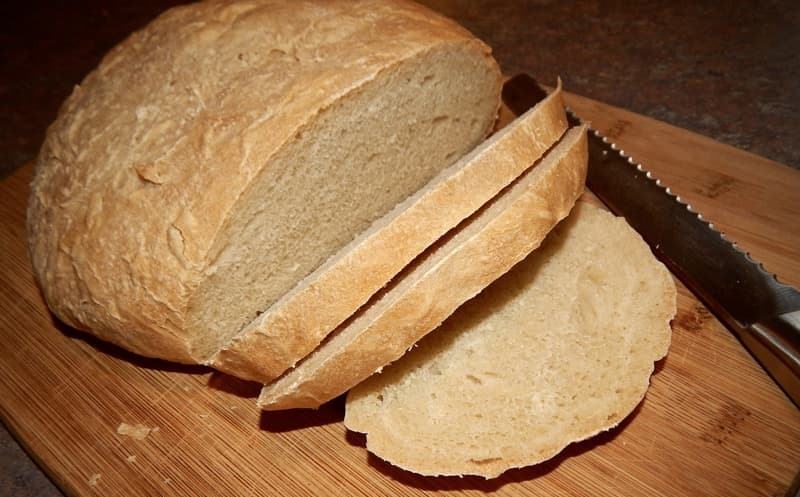
We’ve been over all the health benefits of sourdough bread and how it breaks down in our bodies. The obvious next step is to get baking some sourdough bread of your own.
Not only is sourdough bread low in carbs but it can also be made with gluten-free flour, making it the perfect bread for almost any diet
Here’s how to make a sourdough starter and bake the perfect loaf of gluten-free sourdough bread.Making a Sourdough Starter
To make sourdough bread, first, you have to make a sourdough starter. This is a bit of a process so we’re going to go over how to make a starter for delicious sourdough bread.
Making a starter is a five-day process so make sure you start at least five days before you’re planning to bake the sourdough bread.- 1Day 1: Mix a cup of gluten-free flour with the cool water in a large mixing bowl. You can use a glass or plastic bowl but stay away from metal. Mix until the dough is completely smooth but still thick. Cover the mixing bowl with a lid or saran wrap and let it sit for a whole day at room temperature. The room temperature should be between 70 and 75 degrees.
- 2Day 2: By now there might be a few tiny bubbles in the mixture. This is a good sign and means the natural yeast going to work. If it’s not bubbling yet, don’t panic. The next step is to feed the dough another cup of gluten-free flour and half a cup of cool water. Cover the bowl with a tea towel and let it sit for another day.
- 3Day 3: Again, it’s time to feed the starter. Add another cup of gluten-free flour and half a cup of water. Stir until the starter is completely smooth. Cover the mixing bowl and let it sit for another day.
- 4Day 4: By day four, you should notice a difference in the size of the starter. It should also be covered in bubbles because the yeast is working hard to digest the sugars. It will also have a very sour smell to it. Again, add a cup of flour and half a cup of cool water. Keep mixing the starter until there’s no excess flour and the starter is smooth and thick. Cover the starter and let it sit for 24 hours.
- 5Day 5: By now, your starter should have doubled in size from what it was the day before. There will be even more bubbles. At this point, It should be ready to use for your bread. If you don’t use the starter right away, you have to maintain it. Every few days, take out about a cup of the starter and throw it away. Then, feed it with a cup of gluten-free flour and half a cup of cool water. You will have to go through this process each day until you use it. A way to tell if your starter needs to be fed is a liquid may form on the top of it. This liquid is called “hooch” because it smells like alcohol. Drain the liquid and feed it with flour and water. If you prefer, you can freeze the starter instead of feeding it.
If your first loaf doesn’t turn out right, don’t be discouraged. It takes a lot of tweaking with your starter and other ingredients to get the best sourdough bread. It also depends on how you like your bread, smooth or crusty.
Making Sourdough Bread

Now, it’s time to make your bread! The sourdough starter is done and that’s the hardest part. The rest is a breeze in comparison.
Just like making the sourdough starter, you will need to let the dough sit for a while, usually between one and two days.
This recipe should make about six servings or six slices of bread. Each serving has about 162 calories.- 1In a large mixing bowl, add the starter, gluten-free flour, and water. Use your hands to whisk it together until all the ingredients are thoroughly combined. Now, set aside the mixture for 30 minutes. This is called the autolyze step.
- 2Mix in the psyllium powder and sea salt. Again, use your hands for this process to make sure it’s mixed fully and quickly. When psyllium powder absorbs water, it can clump the dough. The dough should be thick but not overly sticky. If it's still sticky, add a bit more gluten-free flour.
- 3Next, it’s time for bulk fermentation. Cover the mixing bowl with either a lid or saran wrap. Let the dough sit for 12 hours in a warm environment.
- 4By now, your dough should have grown to twice its original size. Preheat your oven to 450 degrees.
- 5Line a baking sheet with parchment paper and flour it so it’ll be easy to remove from the pan later on. If you don’t have parchment paper, flour the pan.
- 6Move the dough to your baking sheet. Using a knife, make a small cut through the top center of the sourdough. Turn the heat of the oven down to 425 degrees when you place it inside. Let it bake for 40 to 50 minutes. When finished, it should be a dark brown color. Another way to tell if your bread is done baking is by tapping it and listening for a hollow sound.
- 7Let the sourdough bread cool for at least an hour. This gives it time to soften up. Otherwise, the bread will be gummy. Once it’s cool, serve.
The Bottom Line
Baking sourdough bread can seem intimidating but with the right sourdough starter and some practice, you can make the perfect loaf.

